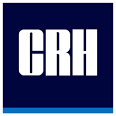Title Page
-
Conducted on
-
Prepared by
-
Location
Review Questions
Work Zone Review
-
1.1 Risk Assessment Policy is known, addresses non-routine and high hazard tasks, and evidence is seen that the Risk Assessment Processes are being followed.
-
1.5 Weekly toolbox talks / safety topics discussed and a copy of this documentation kept at the site/local office.
-
1.6 Site safety briefings are being held and documented with contractors when they arrive at facility.
-
1.7 Temporary personnel training is provided commensurate with the risks and this training is documented.
-
2.3 a) All equipment operators are adequately task trained prior to operating mobile equipment.
-
2.3 b) Daily or pre-use inspections are documented on all equipment and off road vehicles prior to use.
-
2.4 All drivers are trained in company safe driving program (i.e. Smith System) before they drive and at least annually.
-
2.6 Seat belts are being used by all contractors and operators, drivers and passengers of company vehicles and equipment.
-
3.4 All authorized or affected employees conducting servicing or maintenance on fixed or mobile equipment have been trained in the lock-out/tag-out or isolation policy and this training is documented.
-
5.3 Safe entry procedures or rules have been developed (in accordance with OSHA 1926.1203) for each confined space on site and all affected employees are aware of these procedures.
-
7.2 Operators of Hoists of any capacity, as well as operators of loaders and excavators where buckets are used for lifting, have received training in the use of the specific device as well as rigging and lifting training.
-
8.2 A site survey for utility lines is always conducted and documented before underground work is carried out on-project or facility sites.
-
8.3 All employees and operators are aware to stay at least 10 feet away from power lines. As such, spotters are used in situations where power lines are nearby to observe and warn operators to stay at least 10 feet away.
-
9.2 Employees are wearing Class III apparel whenever exposed to vehicle traffic or equipment operations.
-
9.3 Contractors are informed of our PPE requirements and periodically observed to ensure that they are wearing it.
-
12.1 All road crews have knowledge of and understand the CRH AMAT Backer Spotter policy, and backers are used.
-
12.2 MOT personnel and flaggers have been trained according to their duties.
-
12.3 All equipment is outfitted with sufficient retro-reflective tape to be seen at night and the tape is clean and in working order.
-
12.4 A copy of the most current MUTCD/state/local/project specific traffic control standards are immediately available for review on all projects. This can include online, as long as competent persons know where to access it.
-
12.5 All equipment operating in a work zone is equipped with flashing lights as applicable.
-
12.6 All work zone traffic control is inspected and documented regularly by a competent person.
-
12.7 All work zone employees have received work zone awareness training on at least an annual basis.
-
12.8 All reverse systems, echo location systems, back up alarms, including those of contractors, are working properly.
-
12.9 Work zone supervisors & employees are familiar with the Work Zone Intrusion Prevention Manual / Strategies.
-
12.10 An ITCP has been created and is being used to control internal movement.
-
12.11 Employees are aware of the 10 foot rule when working around equipment and the 20 foot rule for safe distance for roller to paver.
Notes/Comments:
-
Overall Impression of the Work Zone.
-
-
Authorized Representative Printed Name:
-
Title:











